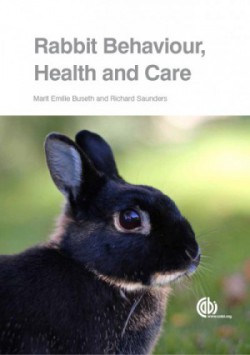How to care for rabbits in the cold

Adaption in the wild
It is important to protect domesticated rabbits against extreme temperatures, both from the heat in summer and the cold winter. Wild rabbits live in underground tunnels, where they are not exposed to large variations in temperatures. In the summertime burrows remain relatively cool, while they are sufficiently warm and dry during winters. This ensures that rabbits are adaptable to the seasons.
However, the problem arises when we take the rabbits out of their natural habitat and keep them in cages. The hutch is above ground level and ensures that the rabbit is exposed to all kinds of weather conditions, and they must always have access to sheltered caves or houses.
It is therefore our responsibility to ensure that rabbits are offered optimal conditions. in Norway, for example, there are challenges in terms of keeping rabbits outside all year, due to harsh and freezing winters, while Australia will experience problems concerned with the heat in summer. Even in the UK, the temperaturs may ecceed the comfortable limits for rabbits. The optimal temperatures for keeping rabbits is 15-20°C
In this post you will se a stunning example in Norway, but it is possible to make it simpler and still great.

A norwegian house and a run for rabbits who live outeside all year round. The companions can be active, and they have a little door into a huge house with insulated areas. Photo: Anett Nyborg
Did you know that rabbits have a very light and fragile bone structure, witch makes them vulnerable under caging conditions with no or little possibilities for normal activities, such as running, hopping or even just sitting up on their hind legs? Did you know that rabbits living a sedentary life develop a poor bone structure, and that those who have spend their lives in a typical cage often suffer from thinning of their bones? In rabbits developing such osteoporosis, the brittle bone is being exposed for fracture and damage. Since the rabbit is excellent at hiding pain, it is hard to know whether your companion rabbit actually has a breakage or other abnormalties in the skeleton.
The best one can do to prevent such problems is by providing a sufficent and facilitated living environment. By reading Rabbit Behaviour, Health and Care, you can easily provide sufficent living areas. It will make your rabbit happy.
 Great for both summer and winter Photo: Anett Nyborg
Great for both summer and winter Photo: Anett Nyborg
Despite the ideal temperature conditions, rabbits tolerate degrees below this range relatively well.However, it is essential that some precautions are taken to ensure the outdoor rabbit`s health and welfare.
 Inside the rabbit house Photo: Anett Nyborg
Inside the rabbit house Photo: Anett Nyborg
Regardless of where rabbits live, they must be kept free of damp and draughts, and always have access to a secure area to retreat into. A cold and draughty environment could lead to serious respiratory infections, in addition to suffering in the rabbit`s joints, muscles and skeleton. To ensure that the rabbit does not develop osteoporosis and consequently fractures and pain, rabbits should have ad-lib access to outdoor runs so that they can maintain a good body condition.

Cozy inside when freezing outside. Photo. Anett Nyborg
-Rabbits need an insulated house and access to a run.
-Outdoor rabbits should always live with a rabbit companion.
-Fresh liquid water must always be available at all times
-Rabbits should not be taken inside and outside excessively
-Never move a house rabbit outside during winter


Inside the insulated sleeping house P: Anett Nygård
Take a look at the photo gallery as well
Read the heart breaking story about Erling, ten years in a hutch
Read all about outdoor living and get lots of tips in Rabbit Behaviour, Health and Care



 Helios P: Tanja Furuset
Helios P: Tanja Furuset



